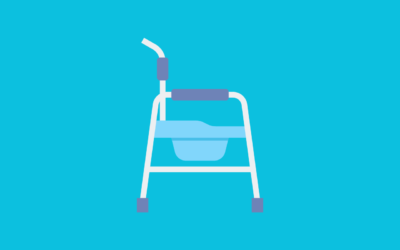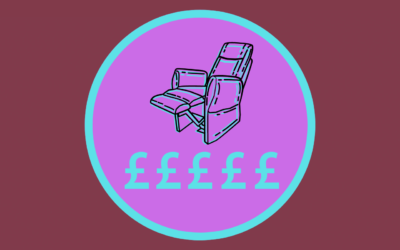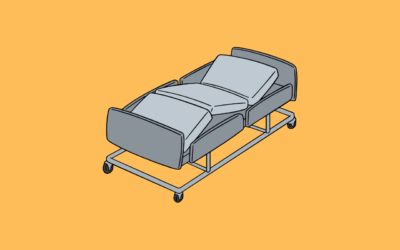Key Takeaways For Guide To Using A Wheelchair
Diverse Wheelchair Options: The guide explores various wheelchairs with different propulsion systems, controls, and technologies.
Innovations and Adaptations: Wheelchairs have evolved, incorporating materials like carbon fibre, shock absorbers, and adjustable features. Innovations cater to various needs, from sports wheelchairs to standing wheelchairs.
Intelligent Wheelchair Technology: The guide delves into the future, discussing intelligent wheelchairs with computer control, sensors, and collision-avoidance systems that enhance accessibility for a wide range of users.
Top Wheelchairs
Customised wheelchairs are available to meet the specific needs of wheelchair users, with a wide range of options for sports wheelchairs, including bespoke controls and seating. It’s important to note that electric wheelchairs and manual chairs are fundamentally different; electric wheelchairs are powered by motors and batteries, providing a safe and effective means of transportation whether the user is propelling the chair themselves or being pushed by someone else. Additionally, a handle can be attached to the side for easier manoeuvring from the front. Here is a comprehensive guide to using a wheelchair.
Guide To Using A Wheelchair Key Points
- This guide to using a wheelchair includes many wheelchairs, each with its own propulsion system, control mechanisms, and technology.
- With a reclining wheelchair, you may tilt the chair backwards or forwards.
- You may extensively modify all main types of wheelchairs to meet the user’s requirements.
- A power-assisted wheelchair is a relatively new invention that utilises the frame and seats of a conventional rigid manual chair while replacing the usual rear wheels with wheels of comparable size that include batteries and battery-powered motors in the hubs.
Availability Of A Diverse Selection Of Manual Wheelchairs
In this guide to using a wheelchair, manual wheelchairs are classified into foldable and rigid. Using a button, the backrests may be folded flat, and the rear wheels can be freed. This feature makes dismantling a chair for transport in a vehicle simpler. An attempt is being made to combine the benefits of both foldable and rigid wheelchairs with automated locking joints.
Various Types of Wheelchairs
Wheelchairs built of carbon fibre and other composite materials are also rising. Frog Legs, which are shock absorbers, are another breakthrough in wooden chair design. The chair’s peaks and troughs will be less intense while moving. This implies that the rear wheels of wooden chairs may be cambered or inclined inward toward the chair. This technology makes pushing oneself harder and keeping a straight course down a slope feasible. Sports wheelchairs have high camber angles to improve stability.
Even in the case of rigid-framed chairs, it isn’t uncommon for them to be adjusted to a person’s height, weight, and preferences in areas like the chair’s trippiness. Everything hinges on the chair’s capacity to do a wheelie and how tough it is to get going.
Wheelchairs Have Changed Over Time
According to this wheelchair guide, the earliest known instances of wheeled furniture are a Chinese stone slate inscription from the 6th and 5th centuries BCE and an ancient Greek vase with a frieze depicting a child’s bed. Wheeled chairs for the disabled didn’t become popular in China until decades later.
The Chinese relied heavily on wheelbarrows to move people and large loads for centuries. Over two and a half centuries after its invention, they first showed the wheeled chair in Chinese art in 525 CE. When King Phillip II of Spain had a model created for him in 1595, it wasn’t until then that the model was made public for everyone to see. The chair has a few flaws because of its comfort and value.
It lacked a powerful propulsion mechanism and needed the help of others to move around. Thus, it resembles a future throne or highchair for the rich and famous that can be moved around.
Wheelchairs Of The Present Day
In 1933, mechanical engineers Herbert Everest and Harry Jennings created the first folding wheelchair that could fit in a vehicle trunk. Everest had been injured in a mining accident as a child and suffered a fractured back. It was only when Everest and Jennings realised that mass-producing wheelchairs would be lucrative that they decided to do precisely that.
A Wide Variety Of Wheelchairs Are Available.
Wheelchairs are used for everyday transportation to specialised activities and access requirements. The wheelchair industry, on the other hand, is constantly innovating. A lack of an appropriate price range or excessive specialisation are two common causes of failure.
These Are Wheelchairs That Need The User To Push Them.
An independent manual wheelchair features four wheels and a skeleton, seat, and footrest. The vehicle’s front wheels are small, but the back wheels are enormous. It’s also common for the heart to have a pillow. Push rims on the larger rear wheels have a diameter smaller than the tyre. The user may now push the chair instead of grasping the tyres.
The rear wheel tyres of wheelchairs with manual brakes are often engaged in a standard feature. In-motion braking is possible with the push-rims, although they’re only meant for parking. The back of a manual wheelchair is often equipped with two push handles for propulsion. Removing these handles is common among wheelchair users to prevent them from being accidentally pushed.
Use Only One Arm To Operate Wheelchairs.
You’ll spin a huge wheel to your left using your arm. Both sides of the ring have a little hand rim affixed to them. A concentric axle connects the smaller outer circle to the bigger inner circle. The chair may rotate to the left or right depending on which hand rim is being grasped. An adjustable footplate connects two wheels on wheelchairs used by paralysed people in one or both arms.
Wheelchairs That Can Be Reclined And Tilted.
In this guide to using a wheelchair, reclining or tilt-in-space wheelchairs feature tiltable sitting surfaces that you may adjust to different angles. Pediatric orthopedist Hugh Barclay treated children with disabilities. Wheelchair tilting may help reduce scoliosis and other postural problems. Some individuals find sitting still for long periods challenging for pain or other reasons.
They may raise your leg if the seat base is still attached to the chair. Traditional reclining chairs are not as comfy as modern models. Depending on the situation, reclining wheelchairs may be necessary to lessen the risk of pressure sores, allow passive hip and knee joint mobility, or facilitate certain nursing operations like stapling.
Intermittent catheterisation may alleviate urinary incontinence and bed transfers. Some individuals use a tray connected to a computer for personal reasons. In wheelchairs, people with quadriplegia are much more likely to use recliners than those with other spinal cord injuries.
Use Of A Wheelchair That Both Reclines And Tilts: What You Need To Know
Wheelchairs that can be tilted independently of the seat base have backrests that can be listed. When leaned backwards, they evenly distribute the weight across their four legs. The user must maintain an upright posture when sitting on a shaped or contoured seat.
Patients with limited mobility due to shear pressure or who need to maintain constant relative positioning of a communication device, motorised wheelchair controls, or another attachment should utilise tilting wheelchairs. Tilting wheelchairs are often used when mobility in the hips or knees is limited. The list of possibilities is more numerous in children’s wheelchairs than in recliners.
Having To Use A Wheelchair And Face Obstacles
Minor impediments and uneven terrain, such as cobblestones, are easier to avoid with a wheelie. They’re between 510 and 610 millimetres in diameter on the back of the wheelchair. All three types of wheels may be utilised based on your desire.
Wheelchairs Modified To Improve Mobility
In thisguide to using a wheelchair, you may extensively modify all main types of wheelchairs to meet the user’s requirements. Everything from footplates to leg supports to the front caster outriggers to changeable backrests and control knobs may be redesigned. Backrests may be adjusted, and the chair can be tilted or reclined. Additional limb or head support may be helpful as an add-on.
In the market for manual wheelchairs, light weights and high costs go hand in hand. Among the most popular low-cost chairs with sling seats are folding steel chairs. Borrowing chairs is available to those who are temporarily unable or financially challenged. These chairs are referred to as “loaners” by significant airports, amusement parks, and retail shops throughout the globe.
The same folding design may be accomplished using aluminium, albeit at a higher cost. Bespoke light chairs might cost thousands of pounds, dollars, euros, or more, depending on your extras. At the top of the market, ultralight versions with a range of seating, accessories, and all-terrain capabilities are possible. In certain circumstances, the price of a medium automobile may be comparable to a manual chair.
A Caregiver Pushing A Wheelchair
The front and rear wheels of an attendant-propelled wheelchair are smaller in diameter than those of a self-propelled wheelchair. To move and operate the chair, the user stands at the back and pushes on the frame’s built-in handles.
The attendant applies the parking brake to the vehicle using either foot or hand. This kind of chair is often rented at educational institutions for large-scale public events like concerts and plays. It is easier to lose weight if you don’t have to do the work yourself. Adapted transfer chairs, which enable wheelchair users to negotiate narrow aisles, are needed in most modern airports. This is a typical occurrence in wheelchair users’ handbooks.
Powerful Motorized Wheelchairs
Users or caregivers may control a folding powerchair with batteries and electric motors. Steering is often done via a joystick on the armrest or the frame’s rear. Different controls, such as head switches, chin-operated joysticks, sip-and-puff controllers, and so on, may replace the traditional manual joystick. These devices increase the number of wheelchair users who can operate independently due to varying degrees of motor impairment.
Furthermore, as aguide to using a wheelchair, powerchairs are typically classified according to their access capabilities. Because of its design, you can only use an indoor chair on flat, level ground. An indoor-outdoor chair might help with uneven terrain or steep climbs by limiting your mobility. Regardless of how sturdy an outdoor chair is, it cannot tackle challenging terrain. Only a few people can travel throughout the nation.
What You Need To Know About Powerchairs
Powerchairs have access to all wheelchair choices. An unpowered manual chair can’t provide many functions that a powered one can, but the weight penalty is enormous. Ten-kilogram manual chairs are available. Outdoor powerchairs may weigh up to 200 kg. Most compact power chairs have a four-wheel design, which is the norm.
The front and rear feature tiny wheels, the centre has larger motorised wheels, and larger exterior versions have six or more wheels. The floating rim senses the user’s force and changes the motor power appropriately. The chair’s mobility and motorised assistance may aid those with low upper-body strength who struggle on rough/uneven terrain and steep hills. If the user prefers, you may swap the wheelchair’s essential wheels with lighter, more agile models.
Wheelchairs That Can Be Used As Stand-Up chairs
It is possible for those who use standing chairs to stand almost upright. Whether or not they are used as a wheelchair or a stand-up frame is determined by personal choice. There is a choice between sitting and standing for wheelchair users. While one chair may include tilt, reclining, and motorised stand capabilities, another may contain all these characteristics in one unit.
Thanks to this innovative device, pressure sores are reduced, freedom is increased, and self-esteem is raised. In addition to breathing and urinary tract infection (UTI) prevention, it boosts bone mineral density, improves flexibility, and helps patients maintain bone mineral density. When wheelchair users can stand up, the backrests may be adjusted to suit their needs.
Athletes Use Wheelchairs
Basketball, rugby, tennis, racing, and dance are adapted sports in which people with disabilities may engage. Research and development have been conducted to meet the distinct demands of each profession’s wheelchairs. They’re no longer resembling one other at all. They have a lot of negative camber on their wheels, and they don’t fold very often.
To further decrease weight, they often use lightweight composites and other materials. It is common for wheelchair racers to bend their knees even if their seats differ significantly. Athletes are permitted to utilise athletic wheelchairs; they are not used daily. Even the most mundane decisions aren’t generally supported. Some disabled individuals, such as those with lower-limb amputations, can use wheelchairs for sports but not daily tasks.
Remarkably Versatile Wheelchairs
An all-terrain wheelchair that can traverse terrain ordinarily inaccessible to wheelchair users is an all-terrain wheelchair. As a result, the automobile’s tyres exert pressure on the vehicle’s steering and braking systems. It may be easy to use a wheelchair in water, such as a beach wheelchair. There are a lot of people who use beach wheelchairs. They’re an excellent choice regardless of the weather. Having extra-wide balloon wheels or tyres for harsh or unstable conditions is standard practice across various terrain types. Batteries and manual versions are also available. This kind of wheelchair is often seen on European beaches and caters to visitors who use wheelchairs.
Wheelchairs With Intelligence
The product’s goal is to make life easier for the end user. Computer control of an intelligent wheelchair, which includes sensors and mobile robots, may be achievable. The most often utilised sensors in smart wheelchairs are the ultrasonic sound range finder and the red infrared range finder. The user interface might be a wheelchair joystick or a touch-sensitive display. Unlike a typical powerchair, this wheelchair allows the user to exert physical control over speed and direction rather than relying only on the wheelchair’s control system.
Intelligent wheelchairs can be used by a wide variety of people. They’re made for people with cognitive issues like dementia and use collision avoidance techniques to ensure they don’t choose the wrong driving instruction and end up in an accident. Paralysed people are the primary focus of other initiatives that help people with disabilities. The intelligent wheelchair processes small muscle movements into high-level instructions and executes them. Route planning is a common artificial intelligence approach in wheelchairs.
Summary Of A Complete Guide To Using A Wheelchair In The UK
Manual wheelchairs are classified into two types: foldable and rigid. Foldable chairs can fit into a small space after being used. Fixed versions are constructed of lightweight materials like aircraft-grade aluminium and titanium. Sports wheelchairs have high camber angles to improve stability and ‘Frog Legs’ for shock absorbers.
Wheelchairs are used for everything from everyday transportation to specialised activities. There are many different types of wheelchairs, each with its own propulsion system. An Independent manual wheelchair features four wheels, a skeleton, a seat, and footrests. The push-rims on the larger rear wheels have a diameter smaller than the tyre.
Check out all the types: Self-Propelled Wheelchairs, Transit Wheelchairs, Travel Wheelchairs, Bariatric Wheelchairs, Powerchairs, and Folding Powerchairs.
Top Wheelchairs
Explore More About Using a Wheelchair
- Best Wheelchairs for Comfort and Mobility – Discover the best wheelchairs designed for comfort, ease of use, and enhanced mobility.
- How to Choose the Right Wheelchair – Learn how to select the perfect wheelchair based on your needs, whether manual or powered.
- Wheelchair Maintenance and Care Tips – Get expert tips on how to properly maintain and care for your wheelchair to ensure it lasts longer.
- Essential Wheelchair Accessories for Comfort – Explore essential accessories that enhance wheelchair comfort and usability.












